Mole poblano is a traditional Mexican sauce that boasts a rich history dating back centuries. Legend has it that it originated in the kitchens of Puebla, Mexico. It blends indigenous ingredients with Spanish influence to create a delicious Mole Poblano sauce that is rich and complex in flavor.
Scroll through below to learn more about Mole Poblano and the ingredients used to make the sauce, or hit the “jump to recipe” button to get started.
What is Mole Poblano?
The word mole originates from the Aztec word molli, meaning something smashed or pureed into a sauce. In the case of mole poblano, roasted chilies and vegetables, burned tortillas, intriguing spices, and chocolate are blended into a sophisticated topping for a multitude of dishes. The flavor profile is a complex tapestry of smoky chilies, garlic, spices, and the bitter sweetness of Mexican chocolate.
There are several different legends regarding how mole poblano originated. The most common legend takes place sometime in the colonial period. Upon hearing that the archbishop was going to visit, the nuns at the Convent of Santa Rosa in Puebla worried because they had nothing to prepare. They prayed and gathered what they did have – chili peppers, spices, nuts, day-old bread, and chocolate – combining it into a thick sauce, which they served over turkey pleasing the bishop.
Learning To Make Mole Cooking Class In Puebla, Mexico
During a trip to Puebla, Mexico, I attended a cooking class where we learned how to make this signature dish of Puebla. The class was held at Mesones Sacristía, a restaurant and boutique hotel. The first thing I noticed when we entered was the color. Vibrantly painted plaster walls combined with antique furniture, Talevera ceramics and cheerful linens to create a whimsical space. I especially liked the bright courtyard where we dined a few days following our class.
Lots Of Variations
There is no single recipe for mole poblano, simply the common thread of chilies and chocolate. Additionally, there are over 300 other varieties of mole prepared with everything from pumpkin seeds to coconut.
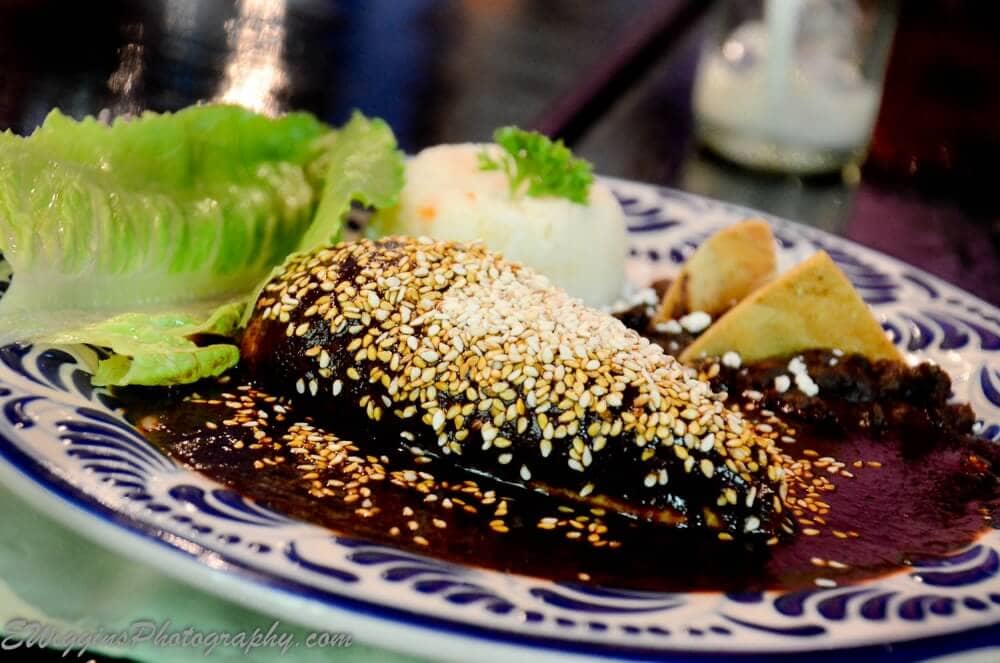
The mole poblano we made in Mexico, served over turkey breast with a side of rice and tortillas.
Using the assistance of an interrupter, Chef Alonzo Hernández led us through the preparation of his famous mole poblano sauce, while my fellow bloggers and I had fun taking turns behind the stove. I was most surprised when Chef Alonzo instructed us to allow tortillas to catch on fire then blow them out.
A Labor of Love
Here’s the thing about mole poblano: it’s not your everyday, whip-it-up-quick kind of sauce. This masterpiece requires time and patience. Traditional recipes call for a laundry list of ingredients, many of which need to be roasted, toasted, and blended to perfection. But trust me, the end result is worth every second of effort.
The Magical Ingredients
Now, let’s talk ingredients. At its core, you’ve got chili peppers, spices, nuts, seeds, and chocolate. Yep, you read that right—chocolate! The combination of cocoa and chilies creates a tantalizing depth of flavor.
Now, don’t let the long list of ingredients below scare you. Many are common spices. However, some of the ingredients may be hard to find outside of Mexico. So I suggest gathering everything before you plan to make this savory sauce for company.
List Of Main Ingredients In Mole Poblano Sauce:
CHILIES
- Mulato Chiles: Mulato chiles offer a mild, slightly sweet taste with hints of chocolate and licorice.
- Ancho Chiles: Ancho chiles are dried poblano peppers, known for their fruity, raisin-like flavor with mild to medium heat.
- Pasilla Chiles: These chiles are dried chilaca peppers, offering rich, earthy notes with a moderate level of spiciness.
FRUITS + VEGETABLES
- Roma Tomatoes: These tomatoes are prized for their meatiness and low moisture content, making them perfect for sauces. In mole poblano, they provide a tangy sweetness and help balance the richness of other ingredients.
- Onion: Onions add depth and sweetness to the mole poblano sauce. They are usually cooked until soft and caramelized to enhance their flavor.
- Garlic Cloves: Garlic brings its characteristic pungent aroma and flavor to the mole poblano. It adds complexity and depth to the sauce.
- Ripe Plantain: Ripe plantains add sweetness and a subtle banana-like flavor to the mole poblano. They also help thicken the sauce and provide a smooth texture.
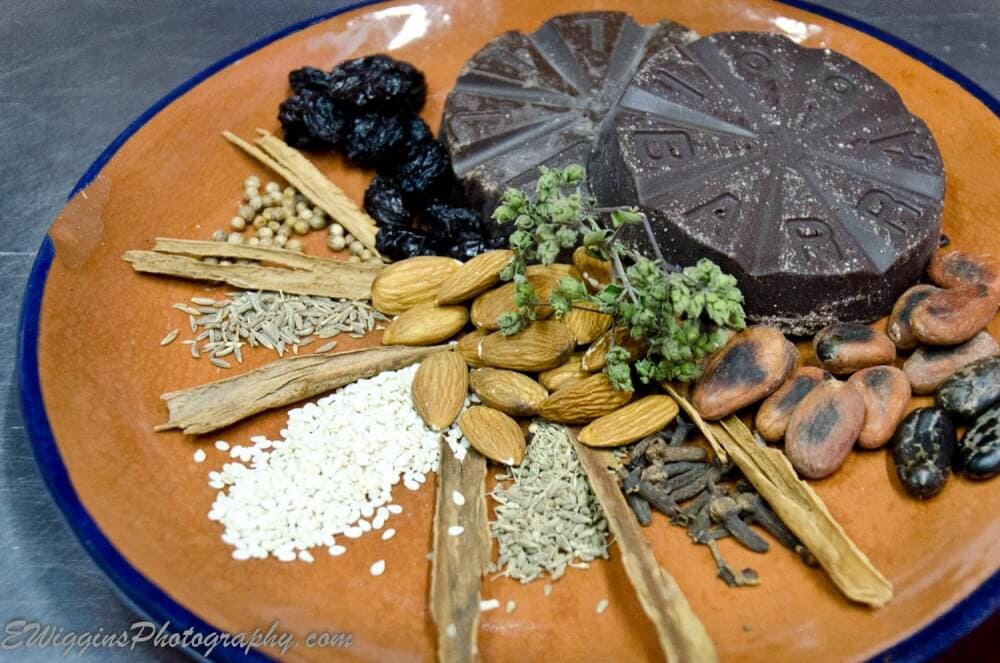
A place of spices, raisins, chocolate and almonds for the mole poblano we made in Mexico.
NUTS + SPICES
- Almonds: Almonds add richness and creaminess to the mole poblano sauce. They contribute a nutty flavor and help thicken the sauce when ground.
- Raisins: Raisins provide sweetness and depth of flavor to the mole poblano. They add a subtle fruity note and help balance the spiciness of the chilies.
- Spices: Fennel Seeds, Cumin Seeds, Whole Black Peppercorns, Coriander Seeds, Whole Cloves, Cinnamon Sticks. These spices form the backbone of the mole poblano’s complex flavor profile. Each spice contributes its unique aroma and taste, ranging from warm and earthy to floral and sweet.
- Sesame Seeds: Sesame seeds are toasted to bring out their nutty flavor and then ground into a paste. They add richness and depth to the mole poblano sauce.
PANTRY ITEMS
- Corn Tortillas: Corn tortillas are toasted or fried until golden brown and then blended into the sauce. They add thickness and body to the mole poblano while also contributing a subtle corn flavor.
- Sugar: Sugar is used sparingly to balance the flavors in the mole poblano sauce. It helps round out the acidity from the tomatoes and enhances the overall complexity of the dish.
- Chocolate: The cocoa brings a subtle bitterness that balances the sweetness of other ingredients like raisins and plantains. At the same time, it adds a deep, earthy undertone that harmonizes beautifully with the smoky heat of the chilies.
Mole Poblano Sauce Recipe: Step-By-Step
This mole poblano recipe is courtesy Chef Alonzo with a few edits where I added some details regarding the method and spices.
Prep Chiles and Vegetables
Remove the stem and seeds from the chiles. Roast the tomatoes, onion and garlic over a flame or in the oven until charred.
Fry the chiles in heated oil until they become soft and fragrant, just a few seconds each. Reserve.
Simmer With Spices
In a large pot, bring about 5 cups of water to a boil. Add the fried chiles and the charred vegetables along with the raisins, almonds, fennel, cumin, coriander, cloves, pepper, sesame seeds and cinnamon. Boil until the vegetables are soft.
Meanwhile, fry the plantain in heated oil until golden, Reserve.
Blend It All Together
Working in batches, transfer the boiled vegetable mixture to a blender and puree until smooth. Strain the sauce through a sieve and discard solids. Use caution and only fill the blender halfway with the hot liquid
Using tongs, hold the tortillas over a flame and let them slowly catch fire and burn until crisp and black. (See notes for alternative)
Puree the plantain and tortillas in a blender with one cup of water until smooth. Reserve.
In a large skillet or pot, heat some oil until very hot. Carefully add the tomato/chile puree to the hot oil and fry a few minutes until thickened.
Reduce the heat and add the reserved plantain puree, mixing well.
The Final Touches
Add the chocolate and sugar, stirring constantly until the chocolate is melted and the sugar completely dissolved. Allow to simmer over low heat for another 20 to 25 minutes.
Serve over turkey or chicken breast. Boiled is traditional, but feel free to use a roasted or grilled preparation instead. Garnish with toasted sesame seeds and fresh cilantro. Serves four.
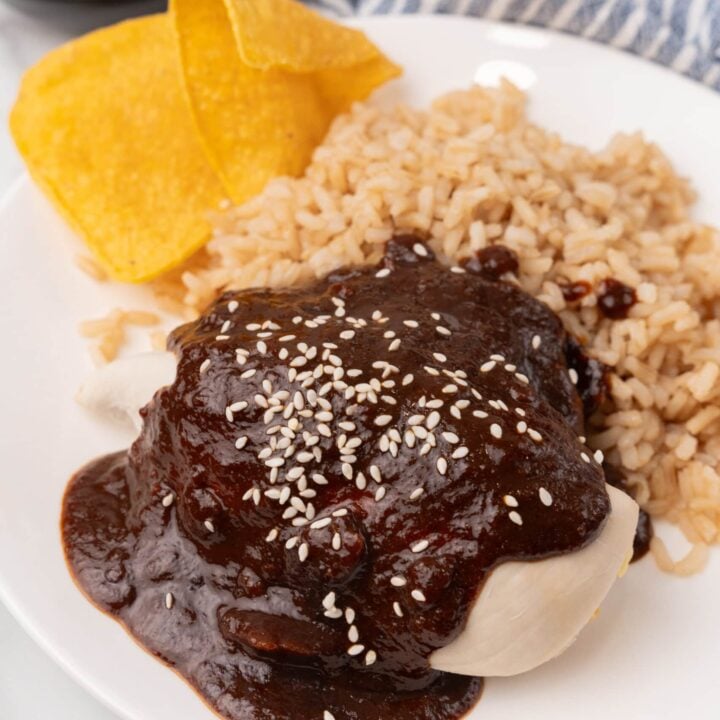
Mole Poblano
A rich tapestry of Mexican flavors, from Chef Alonzo Hernández, Mesones Sacristía.
Ingredients
- 3 mulato chiles
- 3 ancho chiles
- 3 pasilla chiles
- 6 roma tomatoes
- 1 onion, quartered
- 2 garlic cloves, peeled
- 6 cups Water, divided
- ¼ cup Almonds
- ¼ cup Raisins
- ¼ teaspoon fennel seeds
- ¼ teaspoon cumin seeds
- 1 teaspoon whole black peppercorns
- 1 teaspoon coriander seeds
- 1 teaspoon whole cloves
- 2 sticks of cinnamon
- 2 tablespoon Sesame seeds, toasted
- 1 ripe plantain peeled, sliced in half
- 2 corn tortillas
- 1 cup sugar
- 1 disk Ibarra chocolate (roughly 3 oz)
- oil, as needed for frying
- salt to taste
- fresh cilantro or parsley for garnish
- extra toasted tortillas, cut in quarters, for serving
Instructions
- Remove the stem and seeds from the chiles
- Roast the tomatoes, onion and garlic over a flame or in the oven until charred.
- Fry the chiles in heated oil until they become soft and fragrant, just a few seconds each. Reserve.
- In a large pot, bring about 5 cups of water to a boil. Add the fried chiles and the charred vegetables along with the raisins, almonds, fennel, cumin, coriander, cloves, pepper, sesame seeds and cinnamon. Boil until the vegetables are soft.
- Meanwhile, fry the plantain in heated oil until golden, Reserve.
- Working in batches, transfer the boiled vegetable mixture to a blender and puree until smooth. Strain the sauce through a sieve and discard solids. Use caution and only fill the blender halfway with the hot liquid.
- Using tongs, hold the tortillas over a flame and let them slowly catch fire and burn until crisp and black. (See notes for alternative)
- Puree the plantain and tortillas in a blender with one cup of water until smooth. Reserve.
- In a large skillet or pot, heat some oil until very hot. Carefully add the tomato/chile puree to the hot oil and fry a few minutes until thickened.
- Reduce the heat and add the reserved plantain puree, mixing well.
- Add the chocolate and sugar, stirring constantly until the chocolate is melted and the sugar completely dissolved. Allow to simmer over low heat for another 20 to 25 minutes.
- Serve over turkey or chicken breast. Boiled is traditional, but feel free to use a roasted or grilled preparation instead. Garnish with toasted sesame seeds and fresh cilantro. Serves four.
Notes
The tortillas can be toasted in a dry saute pan to modify for home cooking.
Nutrition Information:
Yield: 4 Serving Size: 1Amount Per Serving: Calories: 508Total Fat: 12gSaturated Fat: 1gTrans Fat: 0gUnsaturated Fat: 9gCholesterol: 0mgSodium: 233mgCarbohydrates: 102gFiber: 9gSugar: 72gProtein: 7g
Nutritional information provided only an estimate.
My visit to Puebla was made possible by the Mexico Board of Tourism who provided my transportation, lodging and food. I paid for my own incidentals and extras. As always, my opinions are my own. Visit my blog TheActiveExplorer.com for more on Mexico and other destinations.
Originally Posted in 2012. Updated in 2024.

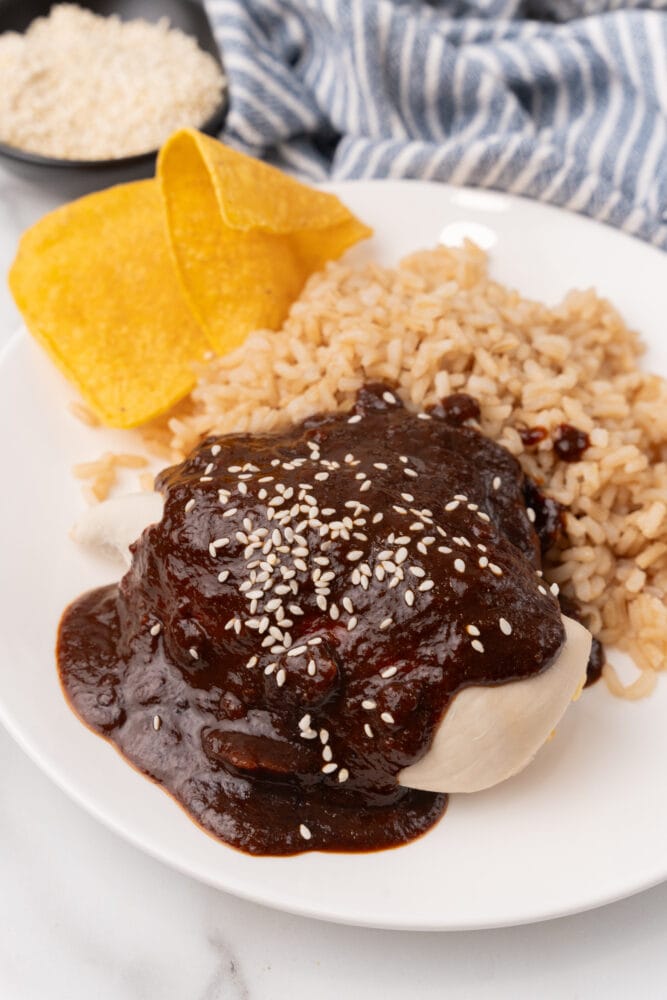
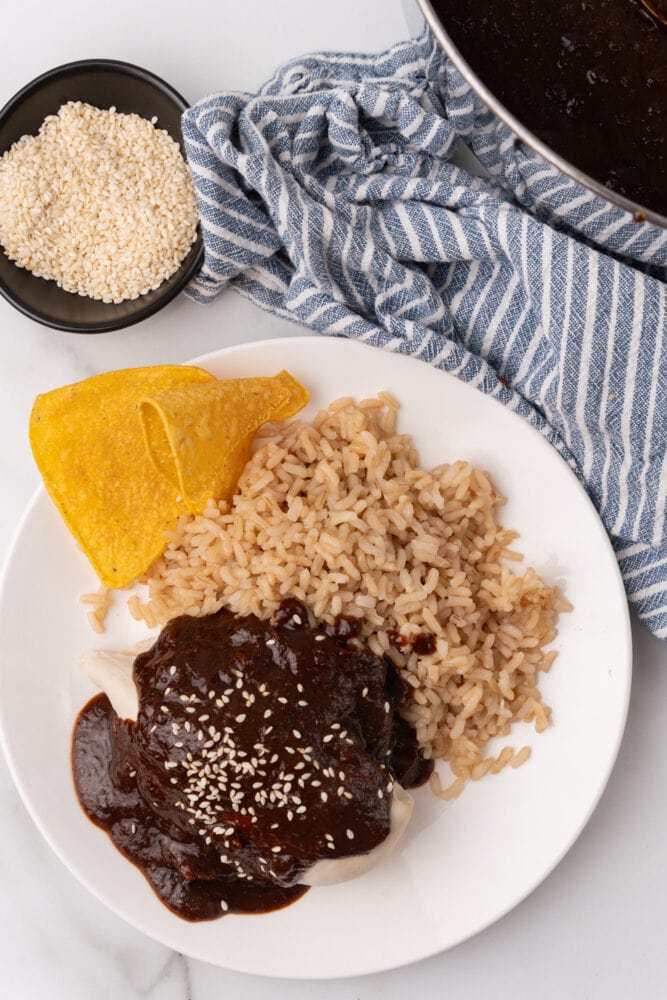
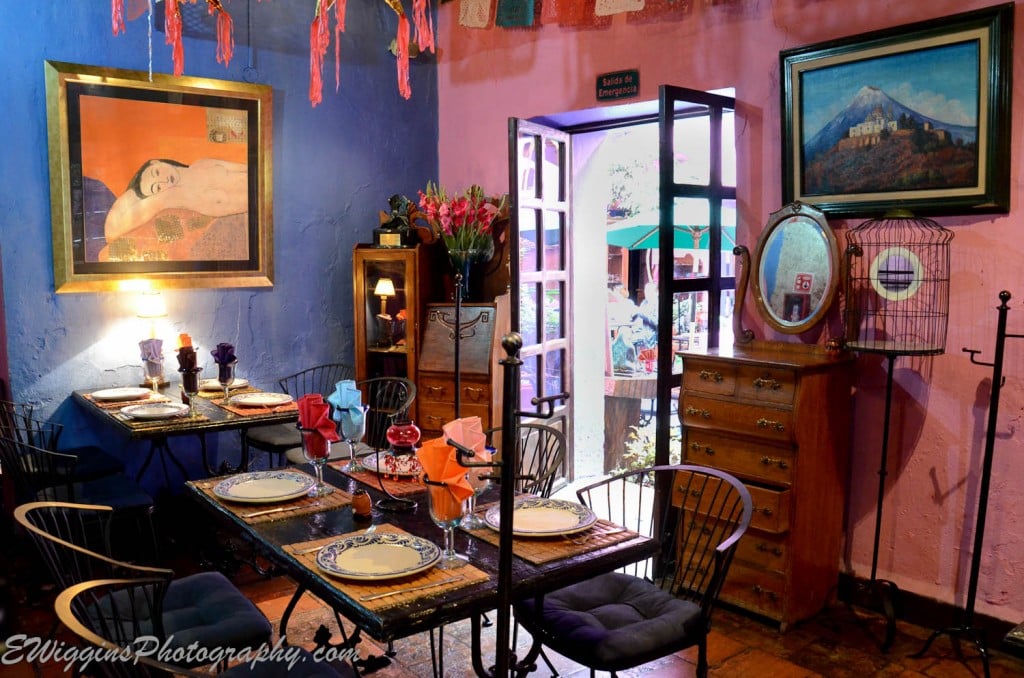
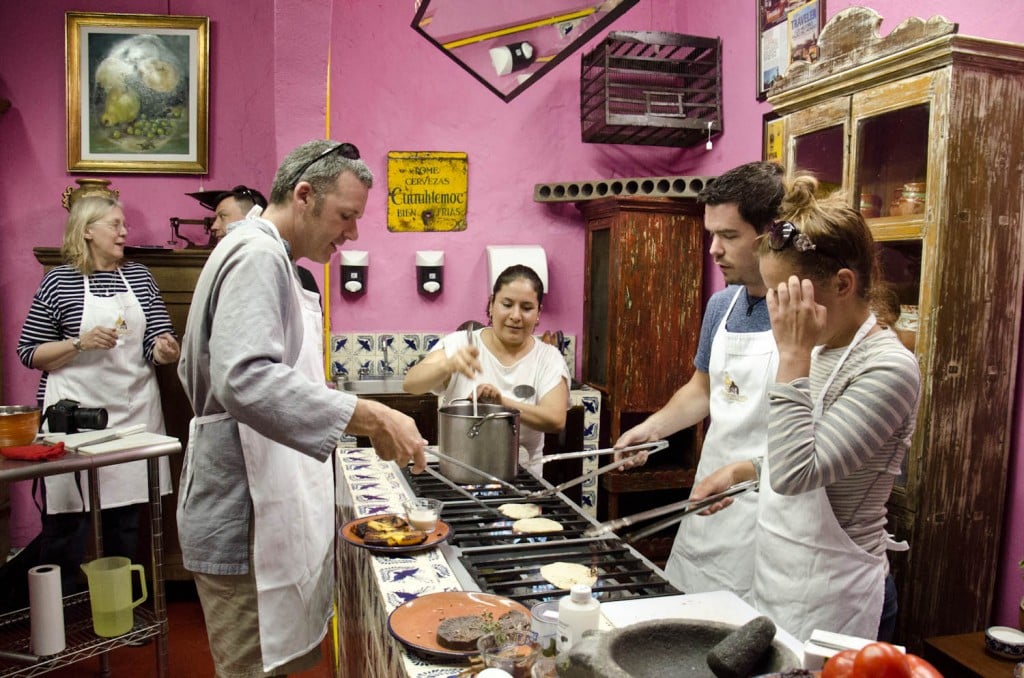
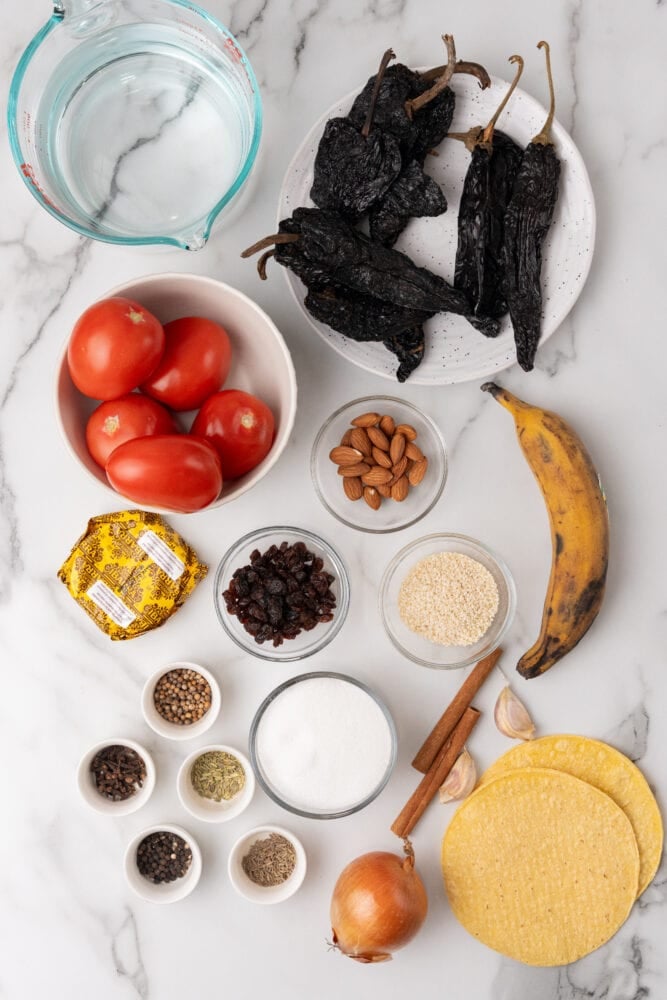
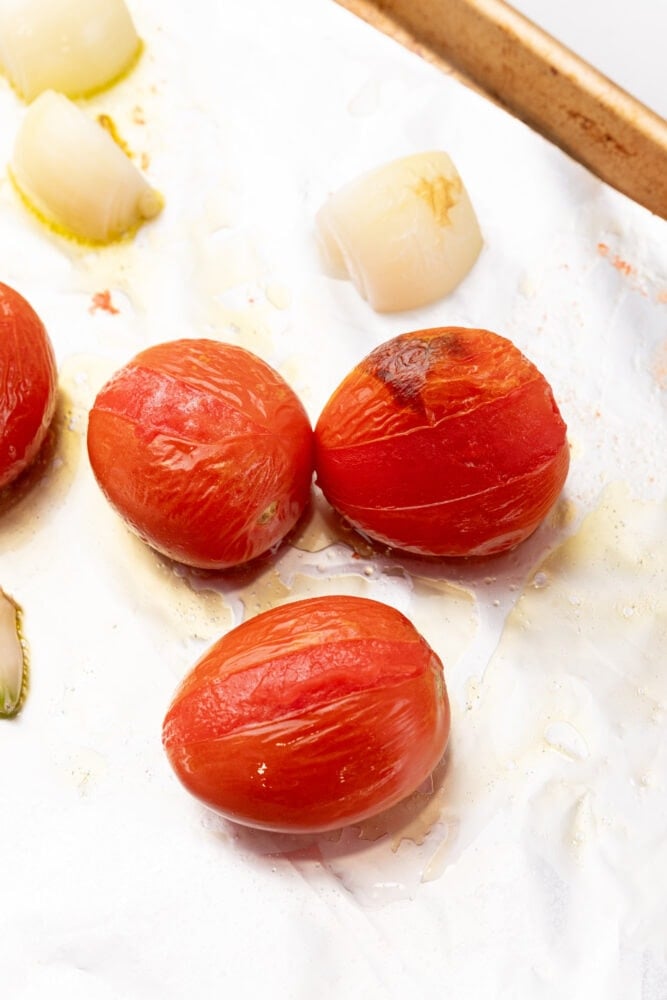
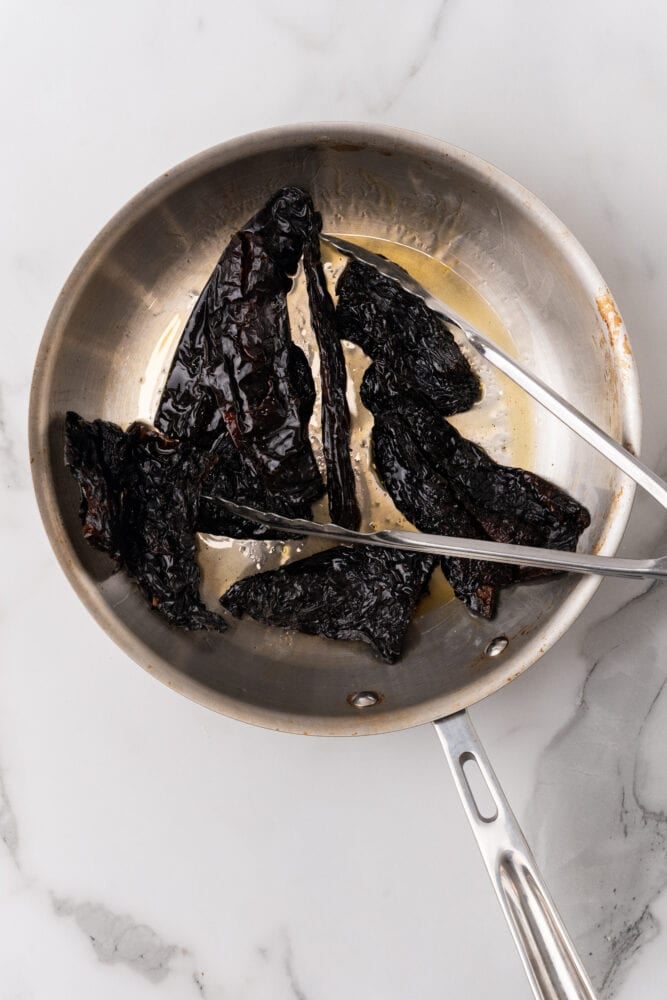
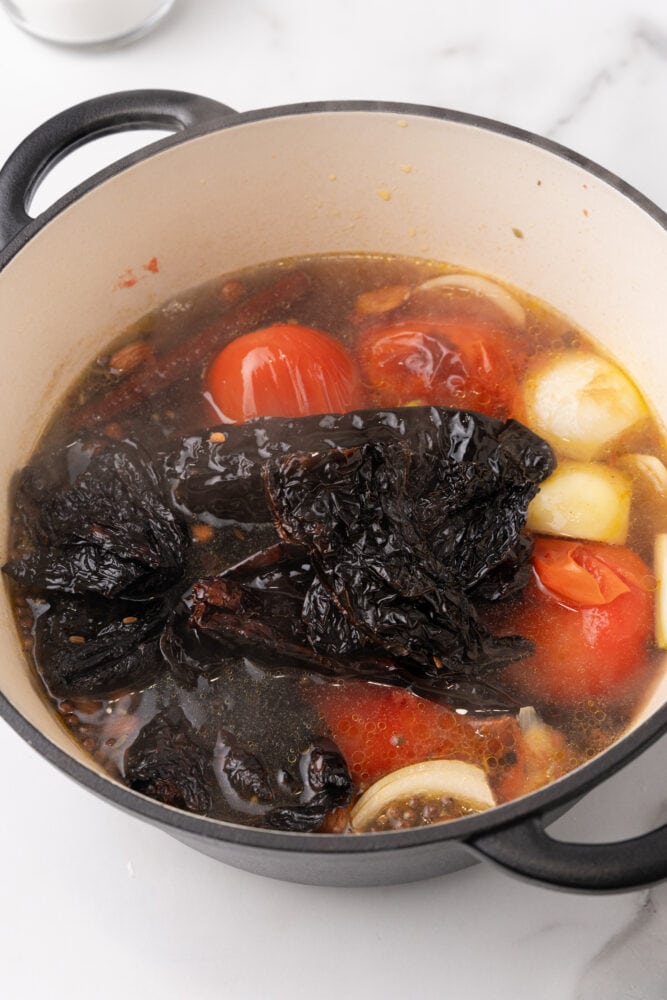
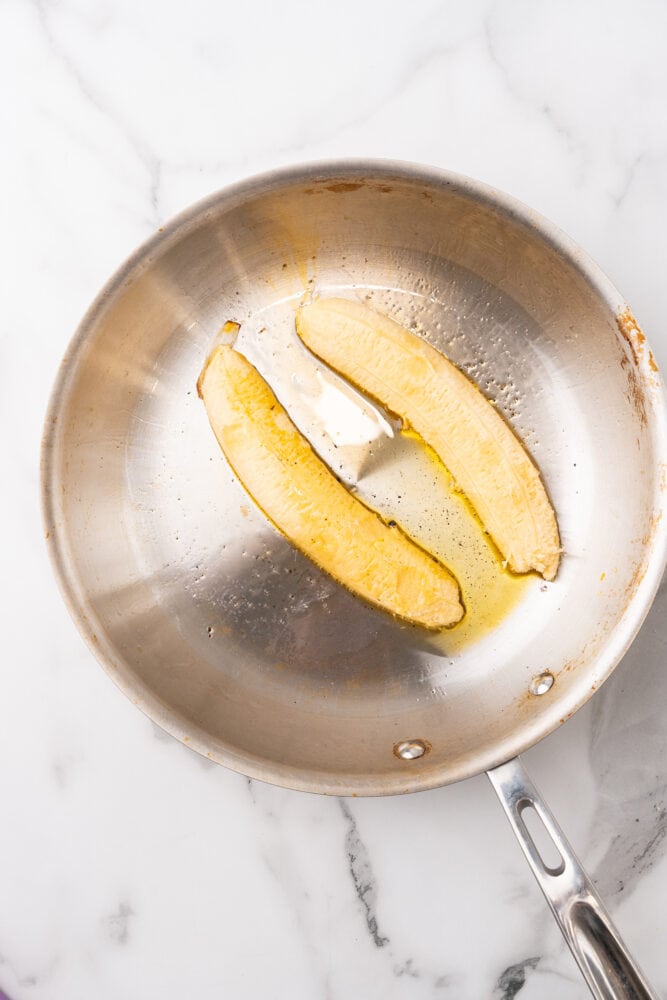
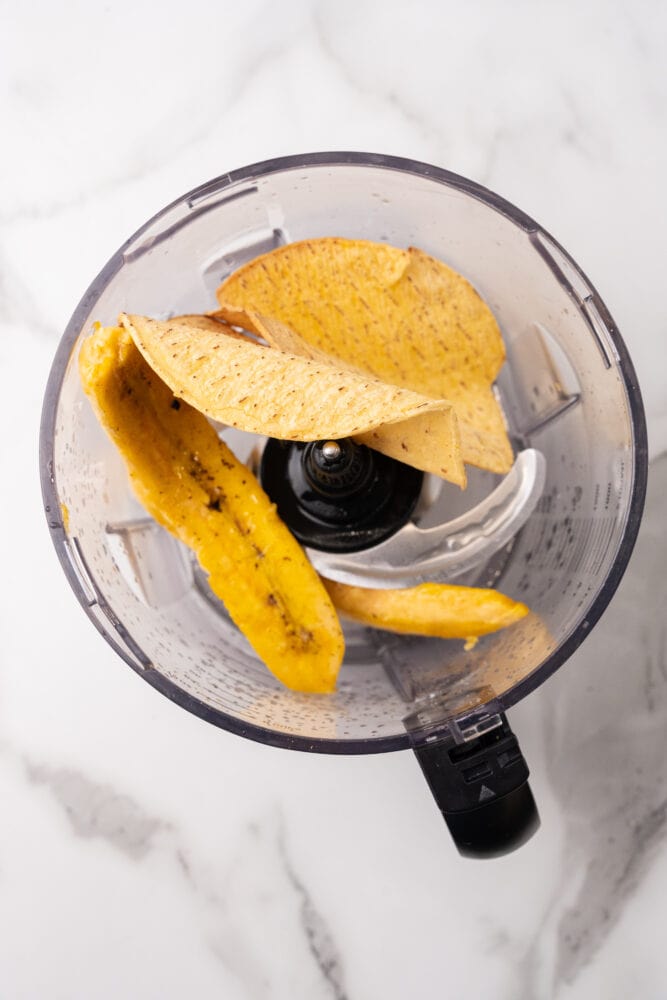
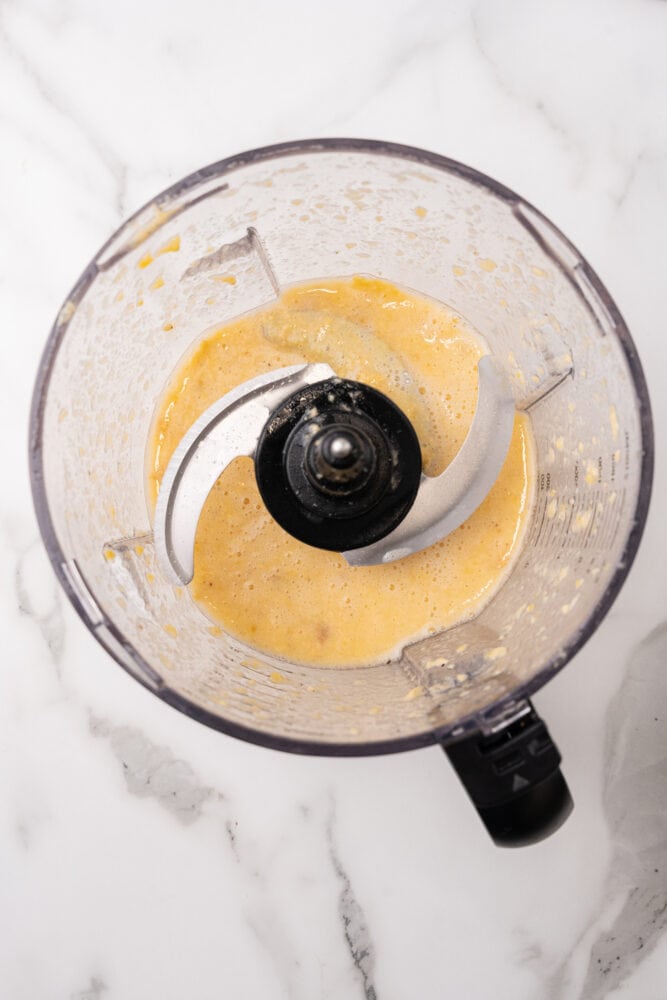
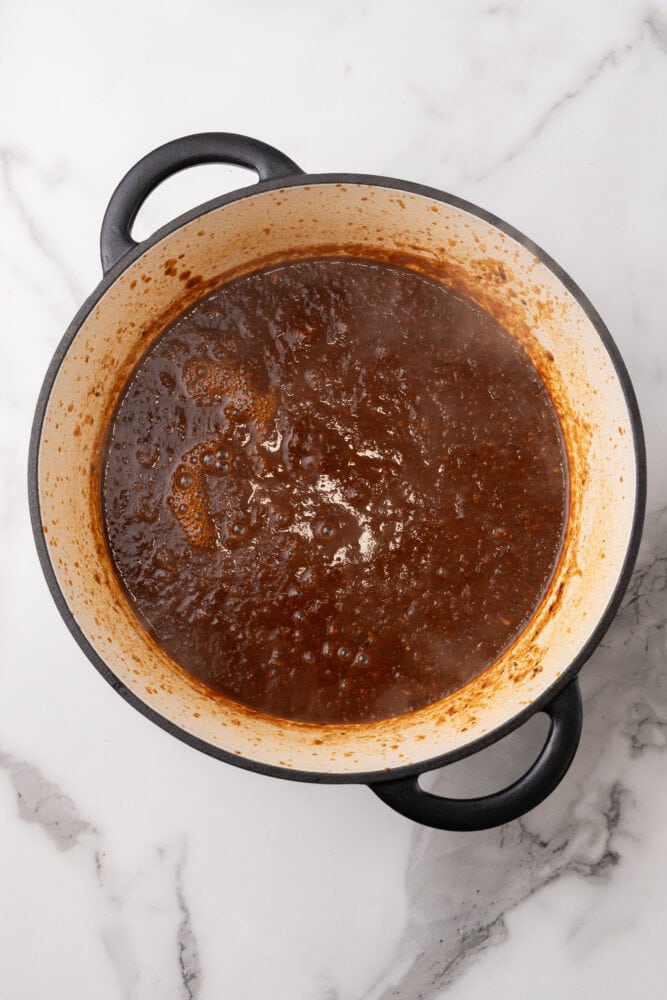
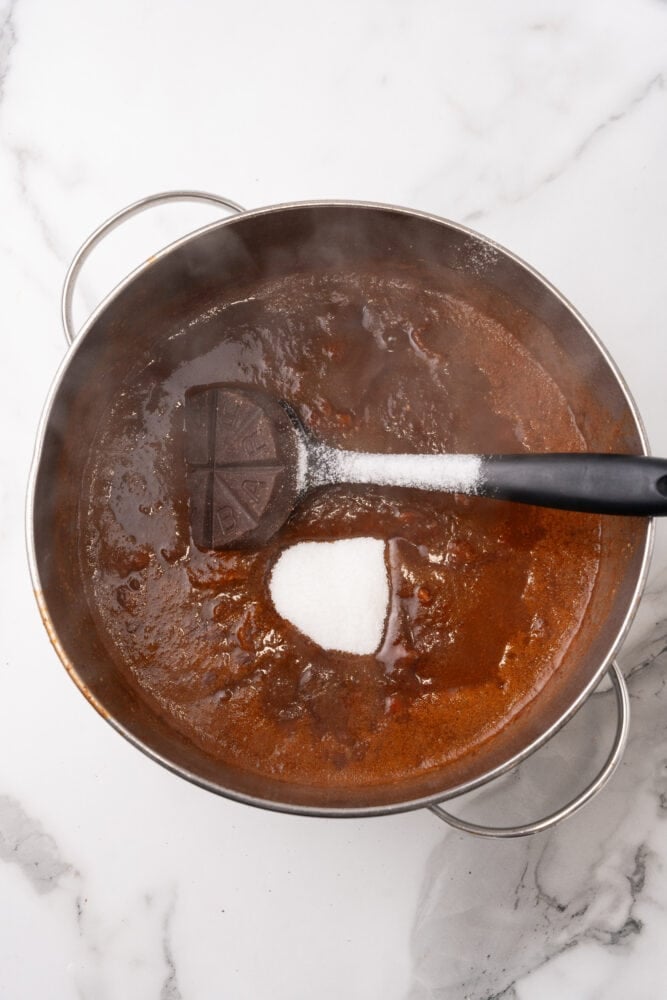
I’m a HUGE fan of mole!